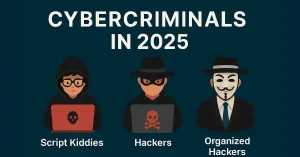The digital world has transformed Cybercrime and Law Enforcement, but it has also given rise to a new type of crime: cybercrime. From hacking and identity theft to online fraud and cyberbullying, the internet has created a Wild West of criminal activity that threatens individuals and organizations. Law enforcement agencies worldwide are working tirelessly to combat these crimes and keep the digital world safe, but it is a constant battle as cybercriminals continue to evolve their tactics. In this report, we will explore the landscape of cybercrime and the efforts of law enforcement to tame it.
Navigating the Murky Waters of Investigation Cybercrime and Law Enforcement
Investigating Cybercrime and Law Enforcement can be a daunting task for law enforcement agencies, as it often involves navigating the digital world’s complex and constantly changing landscape. Cybercrime investigations require specialized skills and resources, from tracking down suspects who may be operating from different countries to deciphering complex technical evidence. This report will delve into the challenges and strategies that law enforcement agencies use to successfully investigate and prosecute cybercrimes. We will also examine the role of collaboration and international cooperation in these investigations and discuss the importance of staying up-to-date with the latest technologies and tactics.
The Intersection of Technology and Crime: Cybercrime And Law Enforcement
As technology continues to advance at a rapid pace, so too makes the threat of cybercrime. From hacking and malware to phishing scams and online fraud, the internet has provided a platform for a wide range of criminal activity. Law enforcement agencies are working to adapt to this evolving threat and have developed specialized units and training programs to investigate and prosecute these crimes. In this report, we will explore the ways in which law enforcement is adapting to the challenges of cybercrime and discuss the importance of staying ahead of the curve in a constantly changing technological landscape. We will also examine the role of education and public awareness in preventing and combating cybercrime and discuss the future of law enforcement efforts in this realm.
The Intersection of Technology and Crime: How Law Enforcement is Adapting to Cybercrime
As technology continues to advance at a rapid pace, so too makes the threat of cybercrime. From hacking and malware to phishing scams and online fraud, the internet has provided a platform for a wide range of criminal activity. The Digital Wild West: Taming Cybercrime And Law Enforcement agencies are working to adapt to this evolving threat and have developed specialized units and training programs to investigate and prosecute these crimes. In this report, we will explore how law enforcement is adapting to the challenges of cybercrime and discuss the importance of staying ahead of the curve in a constantly changing technological landscape. We will also examine the role of education and public awareness in preventing and combating cybercrime and discuss the future of law enforcement efforts in this realm.
The Dark Web and Cybercrime and Law Enforcement: Exploring the Shadows of the Internet
The Dark Web is a shadowy corner of the internet that is often associated with illegal activity and cybercrime. It is where users can operate anonymously and access a range of illegal goods and services, from drugs and weapons to stolen credit card information and hacking tools. While the Dark Web is a small portion of the internet, it has become a key player in the world of cybercrime and a significant concern for law enforcement agencies around the globe. This report will delve into the world of the Dark Web and explore how it is used for criminal activity. We will also discuss the efforts of law enforcement to monitor and disrupt these illegal activities and the challenges they face in doing so.
Cybercrime and the Law: Navigating the Legal Landscape
As the threat of cybercrime continues to grow, so does the need for effective legal frameworks to combat it. From national to international laws, cybercrime’s legal landscape is complex and constantly evolving. This report will examine the various legal frameworks and approaches used to address cybercrime and discuss their strengths and limitations. We will also explore the role of international cooperation in tackling cybercrime and the challenges of enforcing laws across borders. Finally, we will discuss the future of legal efforts to combat cybercrime and the role of emerging technologies in shaping these efforts.
FAQS
Q:What is cybercrime?
A:Cybercrime refers to any criminal activity that involves the use of computers, the internet, or other digital technologies. It can include crimes such as hacking, identity theft, online fraud, and cyberbullying.
Q: How common is cybercrime?
A: Cybercrime is a growing concern and is believed to be on the rise. According to the FBI’s Internet Crime Complaint Center, more than 350,000 reported cybercrime cases in 2020, with total losses estimated at over $3.5 billion.
Q: Who investigates cybercrime?
A: Law enforcement agencies around the world are responsible for investigating and prosecuting cybercrimes. In the United States, the FBI is the primary agency responsible for investigating cybercrimes, although other agencies, such as the Secret Service and the Department of Homeland Security, also play a role.
Q: What are some common tactics used by cybercriminals?
A: Cybercriminals often use phishing scams, malware, and social engineering to access sensitive information or systems. They may also use the Dark Web to facilitate illegal activities or sell stolen goods.
Q: How can individuals and organizations protect themselves against cybercrime?
A:There are several steps individuals and organizations can take to protect themselves against cybercrime, including using strong passwords, keeping software and antivirus programs up to date, and being wary of suspicious emails and links. It is also essential to regularly review and update security protocols and to educate employees on best practices for online safety.
Conclusion
In conclusion, cybercrime is a growing concern that poses a threat to individuals and organizations around the world. Law enforcement agencies are working to adapt to this evolving threat and have developed specialized units and training programs to investigate and prosecute these crimes. However, the legal landscape surrounding cybercrime is complex and constantly evolving, and international cooperation is often necessary to effectively address these crimes. Individuals and organizations need to take steps to protect themselves against cybercrime and to stay informed about the latest threats and tactics used by cybercriminals. By working together, we can help to keep the digital world a safer place for all.
Also read: The Top 10 Cybersecurity Tips and Tricks For Small Businesses





